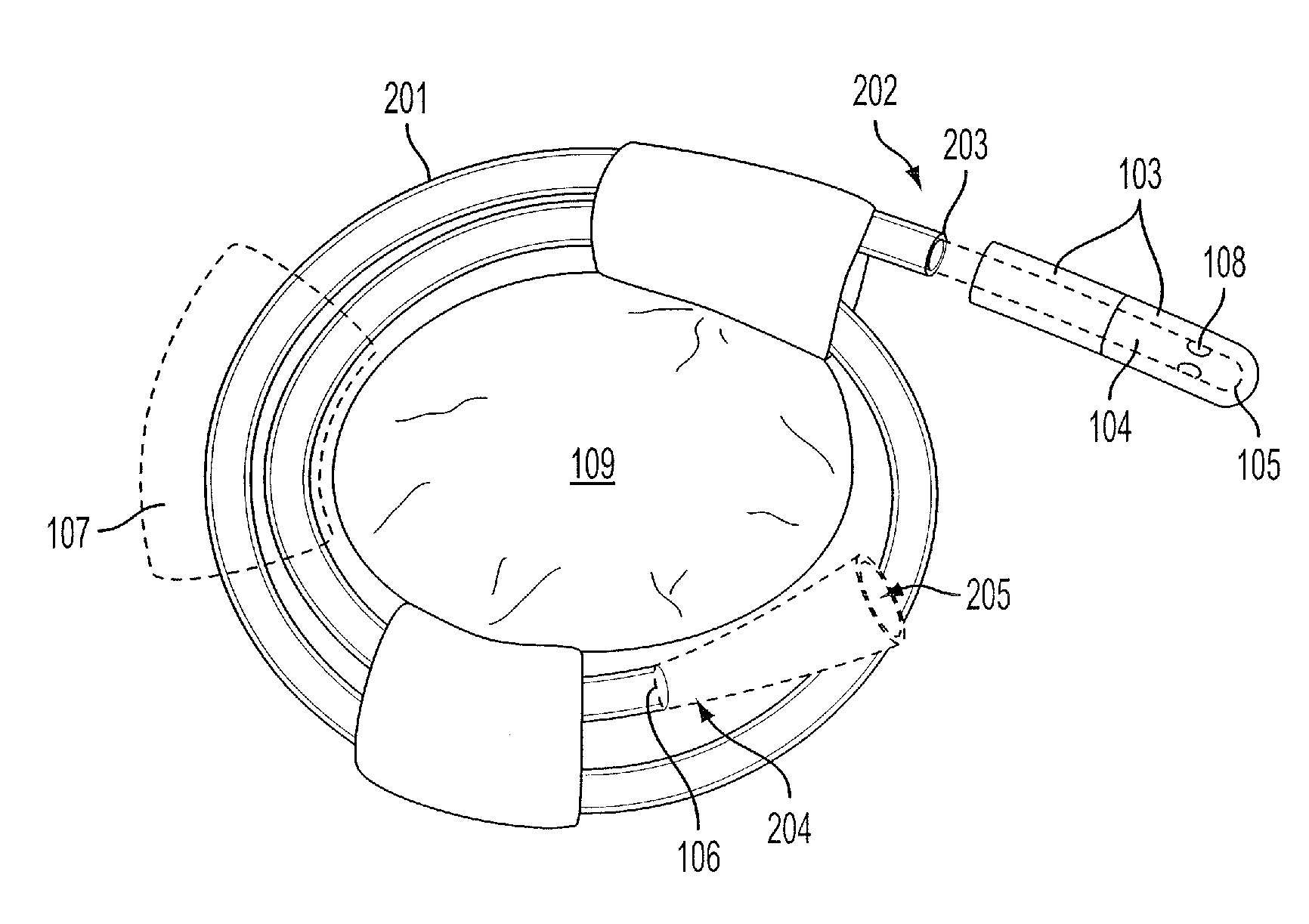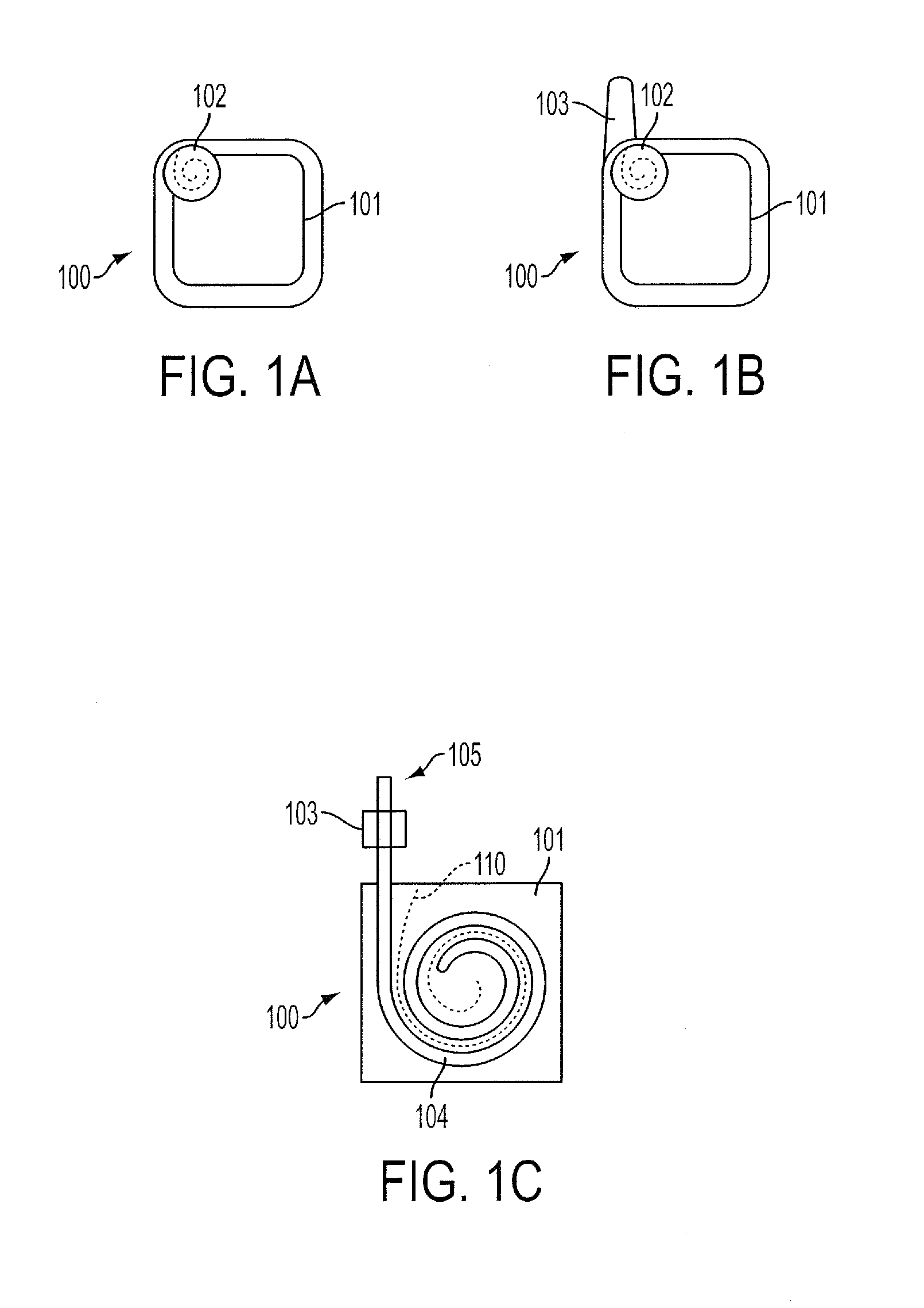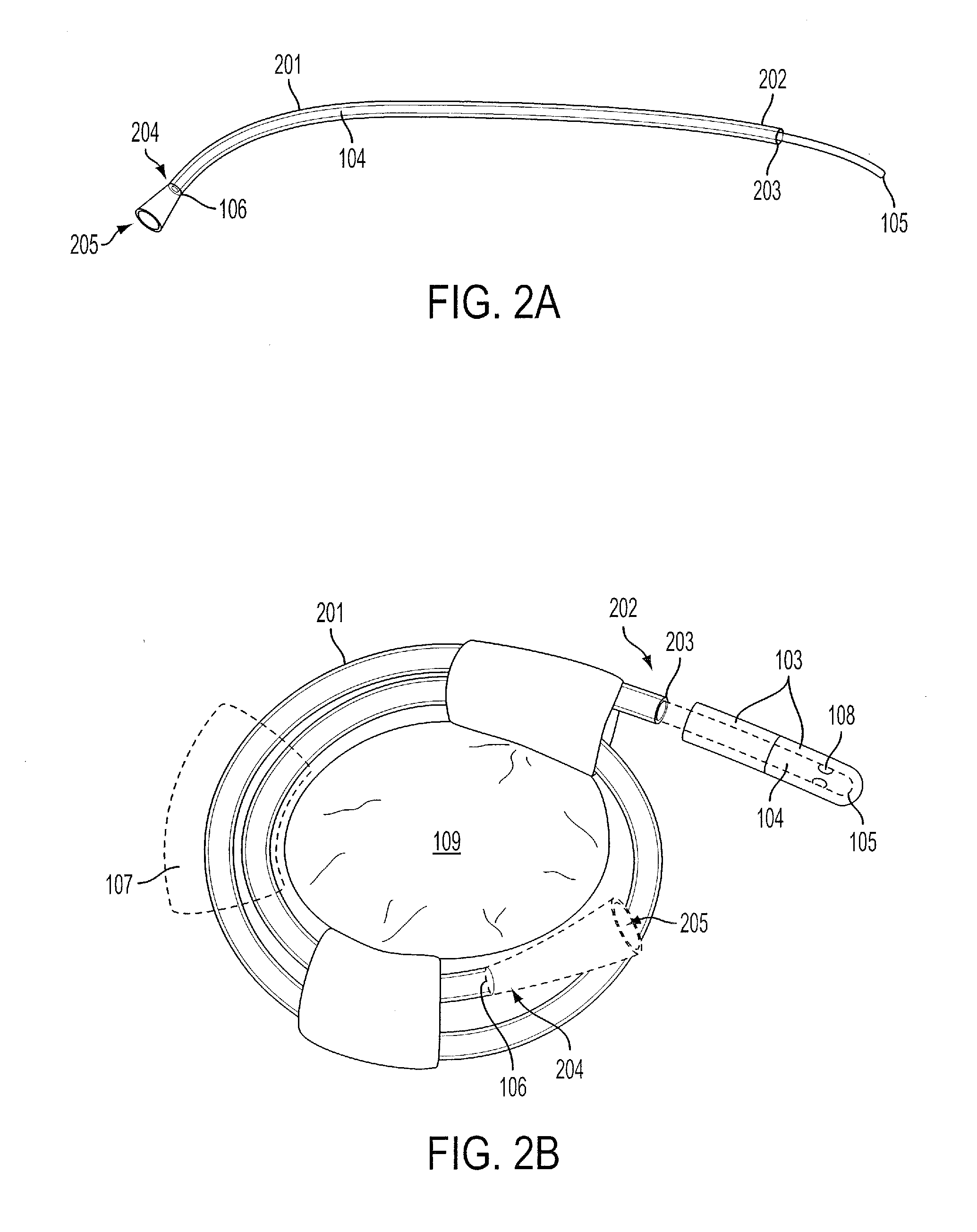Compact catheter assembly
a catheter and compact technology, applied in the field of urinary catheters and assemblies, can solve the problems of insufficient compactness of urinary catheters for patient use, cumbersome storage and transportation, and relatively bulky equipment, so as to reduce the likelihood of urinary tract infection, reduce the difficulty of lubricating, and the effect of convenient application
- Summary
- Abstract
- Description
- Claims
- Application Information
AI Technical Summary
Benefits of technology
Problems solved by technology
Method used
Image
Examples
Embodiment Construction
[0029]Sealed Package
[0030]FIG. 1 shows a conceptual drawing of a sealed package capable of holding a compact catheter assembly.
[0031]FIG. 1 shows at least a panel 1A, showing a conceptual drawing of a closed package, a panel 1B, showing a conceptual drawing of an opened package with an hygienic sheath, and a panel 1C, showing a conceptual drawing of an opened package with an extruded portion of a catheter.
[0032]Opening the Package.
[0033]As shown in the panel 1A, a package 100 includes a sealed enclosure 101, optionally including a breakable, separable, or tearable corner which allows a user to more easily open the package 100 at a designated location.
[0034]In one embodiment, the enclosure 101 can be made of foil, glassine, plastic, or some other substance, such as a substance which is relatively opaque (so that urinary patients can be discreet about their use of a urinary catheter), which is at least moderately resistant to breakage or tearing (so that the content of the package mo ...
PUM
 Login to View More
Login to View More Abstract
Description
Claims
Application Information
 Login to View More
Login to View More - R&D
- Intellectual Property
- Life Sciences
- Materials
- Tech Scout
- Unparalleled Data Quality
- Higher Quality Content
- 60% Fewer Hallucinations
Browse by: Latest US Patents, China's latest patents, Technical Efficacy Thesaurus, Application Domain, Technology Topic, Popular Technical Reports.
© 2025 PatSnap. All rights reserved.Legal|Privacy policy|Modern Slavery Act Transparency Statement|Sitemap|About US| Contact US: help@patsnap.com



